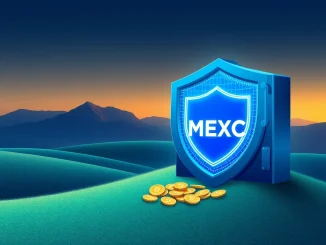
Imagine getting temporary access to a high-value digital collectible, like a Bored Ape, without needing to buy it outright. This exciting possibility is becoming a reality thanks to a new development from **Cornell Tech**. Researchers there have unveiled an application called ‘Take My Ape’, designed to facilitate **NFT borrowing** in a way that challenges traditional ownership models.
What is the Take My Ape App from Cornell Tech?
The ‘Take My Ape’ app is an experimental platform developed by researchers at **Cornell Tech NFT** initiatives. Its core function is straightforward yet groundbreaking: it allows users to gain temporary control over specific non-fungible tokens (NFTs), such as popular profile picture collections like the Bored Ape Yacht Club, without ever taking full ownership or holding the private key in a conventional wallet.
This isn’t just about viewing an NFT; it’s about enabling limited, temporary utility. Think of it like renting a car – you get to drive it and use its features for a set period, but you don’t own the title. The **Take My Ape App** aims to bring a similar concept to the digital realm of NFTs.
How Does Secure NFT Sharing Work? The Role of Liquifaction Technology
The key innovation enabling this temporary control lies in a concept called Liquifaction, combined with the use of trusted execution environments (TEEs). Traditionally, control over an NFT is intrinsically linked to possessing the private key associated with the wallet holding that NFT. Sharing that private key is extremely risky, akin to giving someone the keys to your entire house and bank vault.
This is where **Liquifaction Technology** and TEEs come in. Instead of directly sharing the private key with the borrowing party, the ‘Take My Ape’ system uses TEEs – secure, isolated areas within a computer’s processor. These environments are designed to execute code and handle data in a way that is protected even from the operating system and administrators of the machine itself.
Here’s a simplified breakdown:
- The NFT owner deposits the NFT into a smart contract or system managed by the ‘Take My Ape’ protocol.
- The private key or access mechanism for the NFT is then managed *within* a TEE.
- When a user ‘borrows’ the NFT via the app, the TEE allows specific, predefined actions (like transferring the NFT to a linked application for temporary use, or verifying ownership within a game) to be performed without exposing the private key to the borrower or even the system hosting the TEE outside of that secure enclave.
- The TEE acts as a secure intermediary, enforcing the rules of the borrowing agreement (duration, permitted actions) using the private key it holds securely.
This approach represents a significant departure from standard blockchain security models, which typically rely on keeping private keys offline or solely in the user’s control. By using TEEs, ‘Take My Ape’ attempts to create a secure environment for shared or delegated control over digital assets.
What Are the Potential Benefits of NFT Borrowing?
**NFT borrowing** opens up a range of potential use cases that were previously difficult or impossible due to the all-or-nothing nature of NFT ownership. Some exciting possibilities include:
- Gaming: Renting a high-level character, a rare in-game item, or a unique skin for a specific gaming session or competition.
- Experiences & Utility: Temporarily accessing NFTs that grant entry to virtual events, exclusive online communities, or specific digital services without the commitment of purchase.
- Showcasing & Status: Allowing users to display high-value NFTs as profile pictures or in virtual galleries for a limited time.
- Fractional Use: Enabling multiple people to sequentially use an NFT’s utility (if applicable) without needing complex fractional ownership setups.
- Testing & Trials: Giving potential buyers a chance to ‘try out’ an NFT’s utility before making a large investment.
This model could significantly increase the utility and accessibility of NFTs, potentially lowering the barrier to entry for experiencing certain aspects of the digital ownership economy.
Challenges and the Future of Secure NFT Sharing
While the promise of **secure NFT sharing** through platforms like ‘Take My Ape’ is considerable, challenges exist. The security of the system heavily relies on the integrity and trustworthiness of the trusted execution environments themselves. While TEEs offer strong hardware-based security, they are not immune to potential vulnerabilities or side-channel attacks. Furthermore, the smart contracts governing the deposit and borrowing process must be rigorously audited to prevent exploits.
User adoption also depends on trust in the platform and the underlying technology. Educating users about how TEEs provide security without full private key disclosure is crucial. There are also potential legal and economic implications to consider regarding temporary control versus permanent ownership.
The ‘Take My Ape’ app from Cornell Tech, as reported by The Block, serves as an important proof-of-concept. It demonstrates that alternative models for interacting with digital assets are possible, moving beyond simple buy-and-hold. While still in early stages, this approach using Liquifaction and TEEs could pave the way for more dynamic and flexible uses of NFTs in the future.
Conclusion
The unveiling of the ‘Take My Ape’ app by Cornell Tech researchers marks a significant step forward in exploring new ways to interact with digital assets. By leveraging **Liquifaction Technology** and trusted execution environments, the app offers a novel method for **NFT borrowing** that bypasses the risks of direct private key sharing. This innovation has the potential to unlock a wealth of new use cases for NFTs, from gaming to temporary access to exclusive content, making the digital world more dynamic and accessible. While challenges related to security and adoption remain, this development highlights the ongoing evolution of the blockchain space and the creative solutions being developed to enhance the utility and flexibility of non-fungible tokens. Keep an eye on projects like this that are pushing the boundaries of what’s possible with digital ownership.



